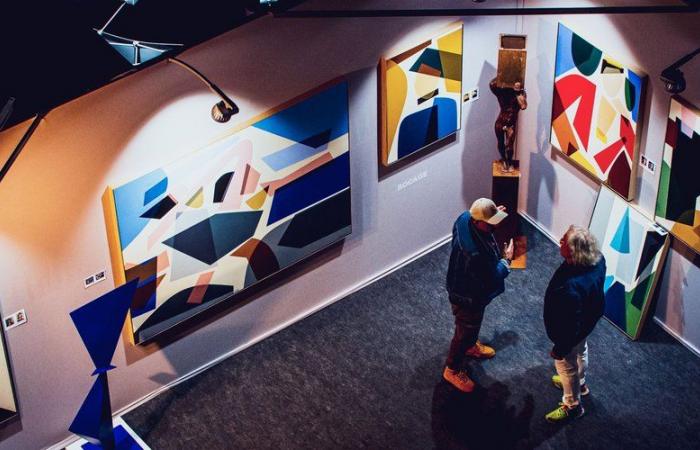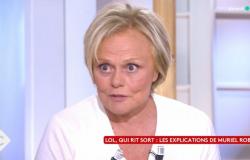The 8th edition of the Art Montpellier event takes place from November 14 to 17 at the Parc des expositions. Its rise in power illustrates the opening of this discreet universe. Despite a complicated current context.
A discreet market in Languedoc Roussillon, contemporary art is often summed up, in the minds of the general public, by the works of Soulages, Di Rosa and Combas. However, there is a multitude of artists, established in the regional territory, who work in relative anonymity.
To create a market, you need artists, but also buyers. The organization of the Art Montpellier fair, the eighth edition of which will be held from Wednesday November 13 at the Sud de France Arena, is proof of a certain reality concerning the subject.
“We are going through two difficult years”
“Today we are in tough times, we are going through two difficult years for our market”explains Roger Castang, gallery owner for around thirty years in Perpignan. “The art market in the region is dynamic, because it interests people, but it still remains a separate market,” supports Patrick Michel, who founded the very atypical Musée d’art brut de Montpellier in 2016, a 100% private project.
According to Roger Castang, “the works purchased today are positioned in a price range between 1,500 euros and 3,000 euros”. What he calls “the acceptable niche”. Indeed, he justifies, “we are in a period where collectors are not ready to make a financial effort”.
“Fewer spontaneous, compulsive purchases”
And if in the region, “there are investors”, these are “at this time not present”. “The particularity of art is that it is subject to these cycles, prosperous periods and others less prosperous”adds Didier Vesse, gallery owner and organizer of Art Montpellier.
“It’s a very fluctuating marketconfirms Hervé Solignat, gallery owner in Uzès, Nîmes and Biarritz. There are fewer spontaneous, compulsive purchases. People think more about their investments, they are more speculative.” “It’s like high-end real estate, high-end art works, sells better”adds Patrick Michel.
An insufficient gallery network?
And yet, as Clément Nouet, director of the Regional Museum of Contemporary Art (Mrac) in Sérignan, in Hérault, notes, “we are in an extremely dynamic region in terms of contemporary art”. He adds: “we are the second French region for the number of art centers”.
When businesses come to the aid of art
More and more business leaders, whether passionate or opportunistic, are investing in works of contemporary art. “It’s a way for them to tax-free their investment”explains Didier Vesse, organizer of the Art Montpellier meeting. “We are seeing a new generation of business leaders investing significant amounts of money”. In the region, one of the best known is Gilbert Ganivenq, a Sète real estate developer (Promeo), converted to galleries, such as Le Réservoir in Sète or La Serre in Montpellier. Most often, the investment is made in the form of leasing. “This allows the company to amortize its investment over several years”adds Didier Vesse, who notes that “this economic phenomenon that appeared a few years ago has become today’s economic reality”. “Business leaders represent 40% of my turnover”testifies Hervé Solignat, gallery owner in Nîmes, Uzès and Biarritz. And, he adds, “It keeps growing.” With a constant: “these bosses very often want to remain discreet about their investment in art”.
But is the economy of this art as dynamic as its artists? “The only downside, if I dare say, is the lack of gallerieshe adds. We are in a very centralized system, where the galleries are mainly centralized in Paris. So it’s not unique to our region.”
“Refusal of unbridled competition”
In his last “Gallery Guide”the 7th edition of which is presented during Art Montpellier, this week, the specialized magazine Artension lists more than forty galleries in Languedoc Roussillon. “The number of gallery owners has increased considerably, from just over 550 in 1980 to more than 1,000 in 2020,” explains Nathalie Moreau, professor at Paul Valéry University, in Montpellier. Hence the risk of fierce competition.
According to Cécile Chiorino, gallery owner in Aigues-Mortes, “There aren’t that many of us in the region, the sun is rising for everyone, the competition is more national.” She explains how she works. “It’s a question of trust between the artist and the gallery owner, I have exclusivity over two or three departments around me, which protects against direct competition”.






